Morrison, Missouri's sign off of Route 100 says the population is 139. The city has a population of 93, according to the latest census data. If you ask any local, they will say neither number is accurate. The town to outsiders looks abandoned. To the townies, they wouldn't deny that it is dying, but the label of a "dead" down is not up to outsiders, but to the people who call it home.
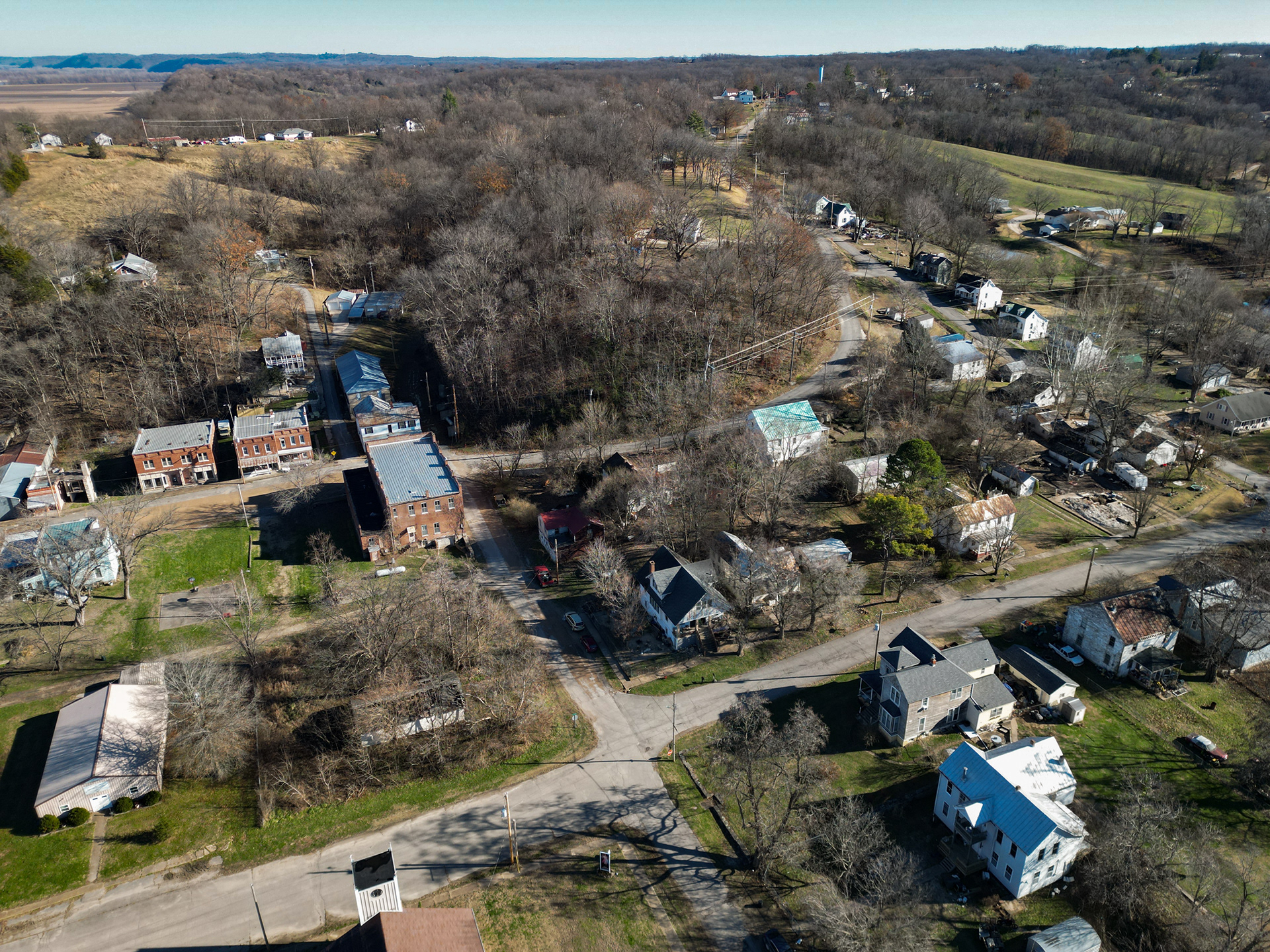
A drone photo of the city of Morrison from above. Morrison’s population from the 2020 census is 93, but if you ask locals like Charley Rost, it is less than that. To an outsider like myself, a stroll down the streets make it seem like the town is abandoned or dead. As my essay will tell, don’t judge a book by its cover.
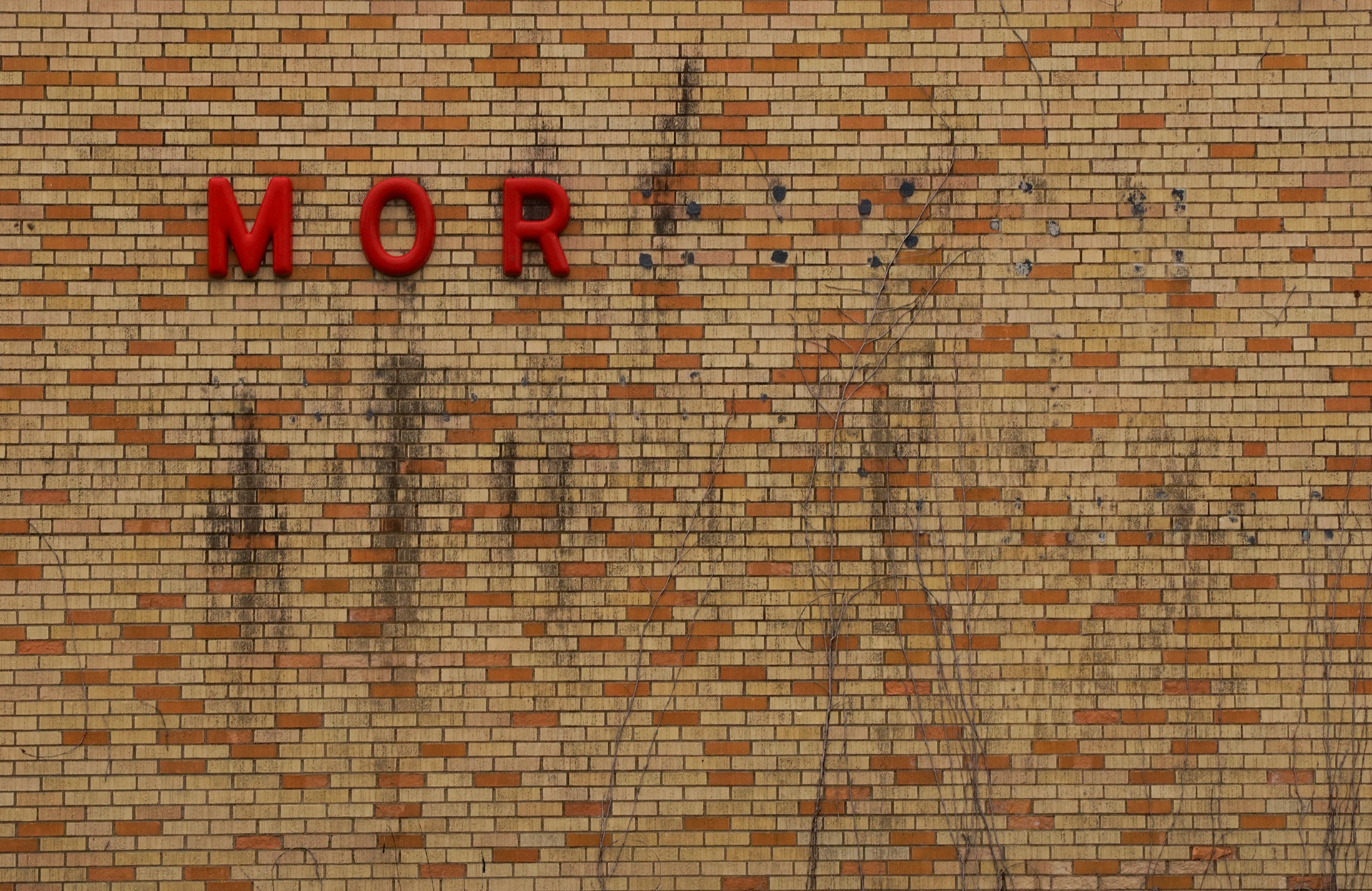
The remnants of the sign of the old Morrison hardware store lay barren. The hardware used to be the center of town, acting as a convenience store to many in town. “If you forgot a birthday present for a kid in town, you’d run there” said Jeanie Birk, a local. The building is now being used by Matthew Kohrs, who depending on you who ask, is a carpenter or works on computers.
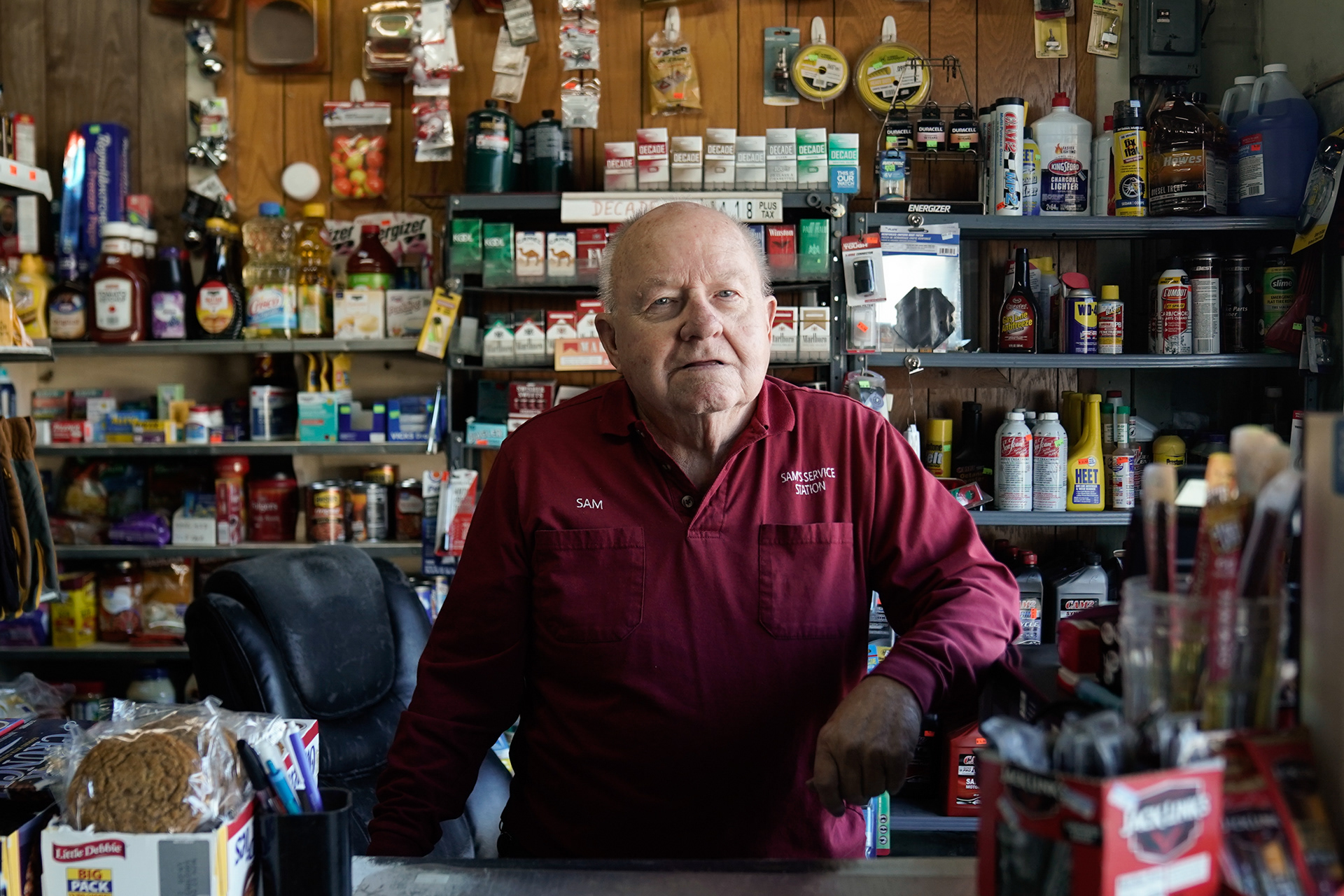
The titular Sam Birk of Sam’s Service Station poses for a portrait inside the store. Sam has been a Morrison resident since birth. Having been raised in the Shobe-Morrison House, a historical house from the origins of the town in 1828. Birk worked at John Deere before buying the gas station in July of 1989 and selling it this past June. Only a few months into retirement, Sam decided to go back to working twice a week under the new owners, the Millers. “Morrison means everything to me. I’ve spent my lifetime here.”
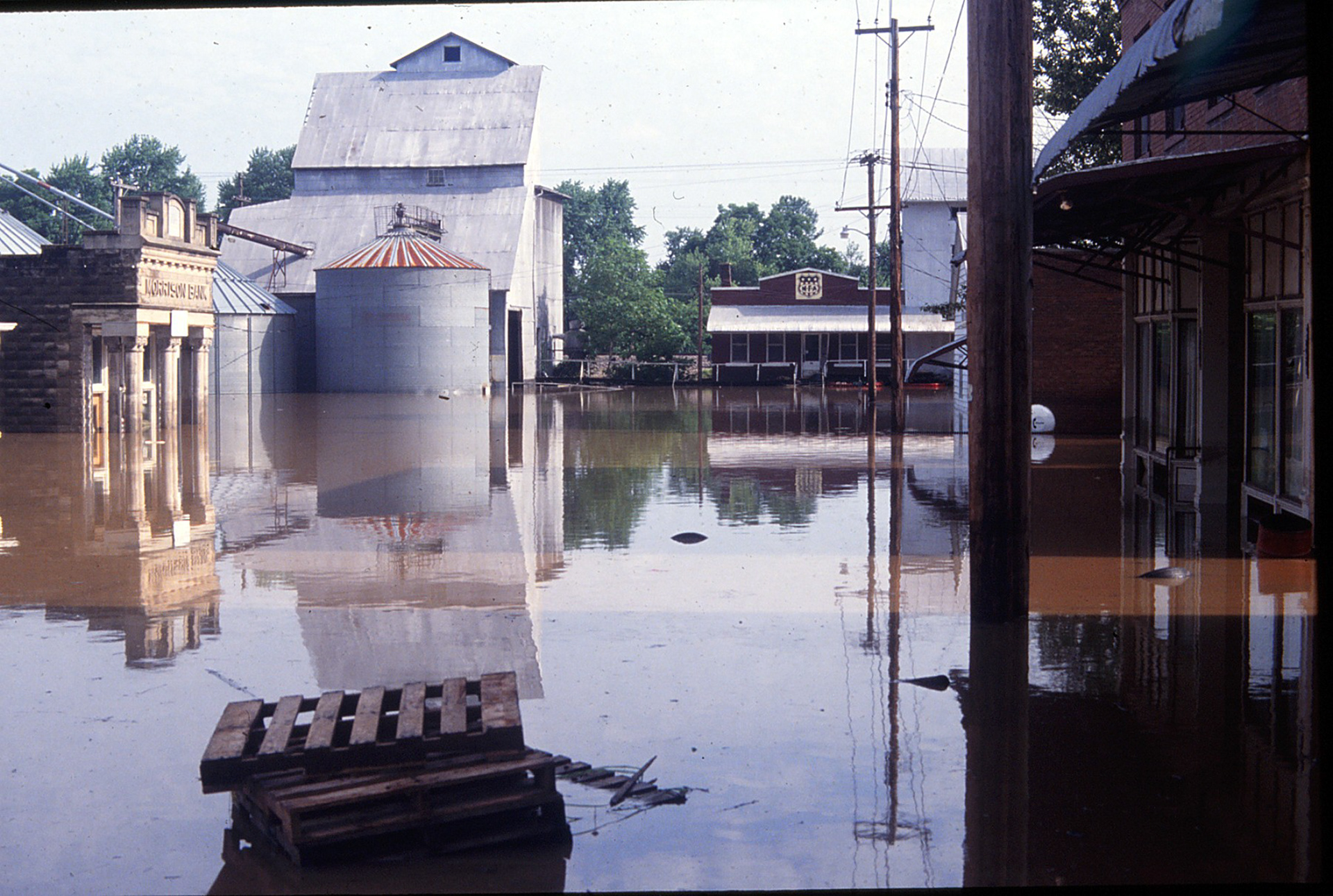
An archival photo of Morrison’s Main Street after the flood of 1993, courtesy of Charley Rost. The flood changed everything about the town. "Before the flood Morrison supported a Catholic Church, a hardware store, a bank, a beauty salon, an MFA cooperative, a grocery store, a tavern, and a Post Office. Though not necessarily considered a thriving community it still had reasonable potential. One by one the businesses closed, first the grocery at the corner of 1st and Main closed. After that the bank closed and eventually businesses folded until today we are left with the Catholic Church (which parishioners extensively remodeled) and a Post Office.”
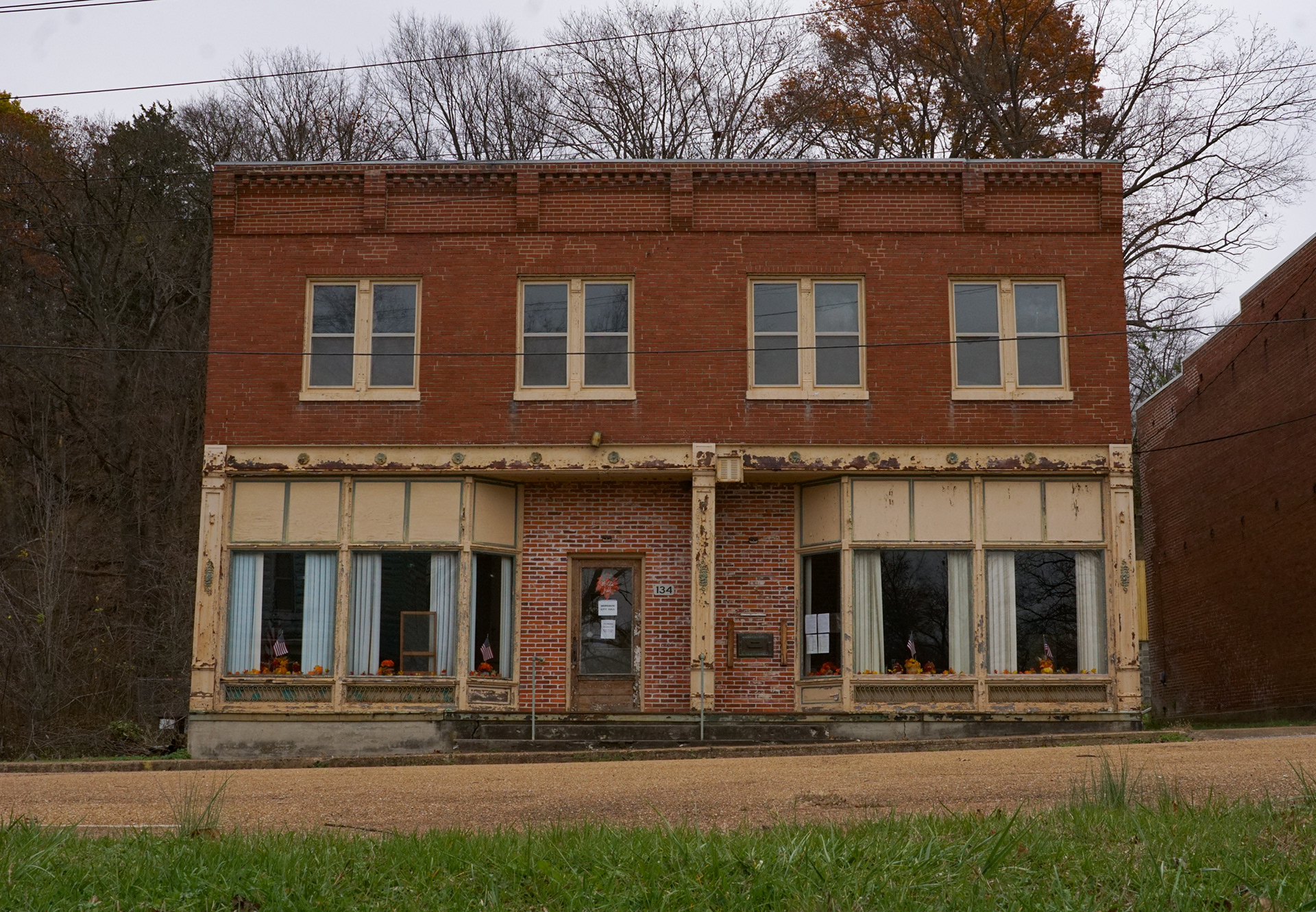
Morrison’s City Hall stands on Main Street. What may look decrepit on the outside hides the central meeting point for local government and town affairs. Small signs on the door tell of the selling of homemade apple butter. When asked about who made it, local Doris Rost said “Everyone. The town made it.” Apples from Washington are brought in by locals, where they are cleaned, cored, cooked and canned by various townies.
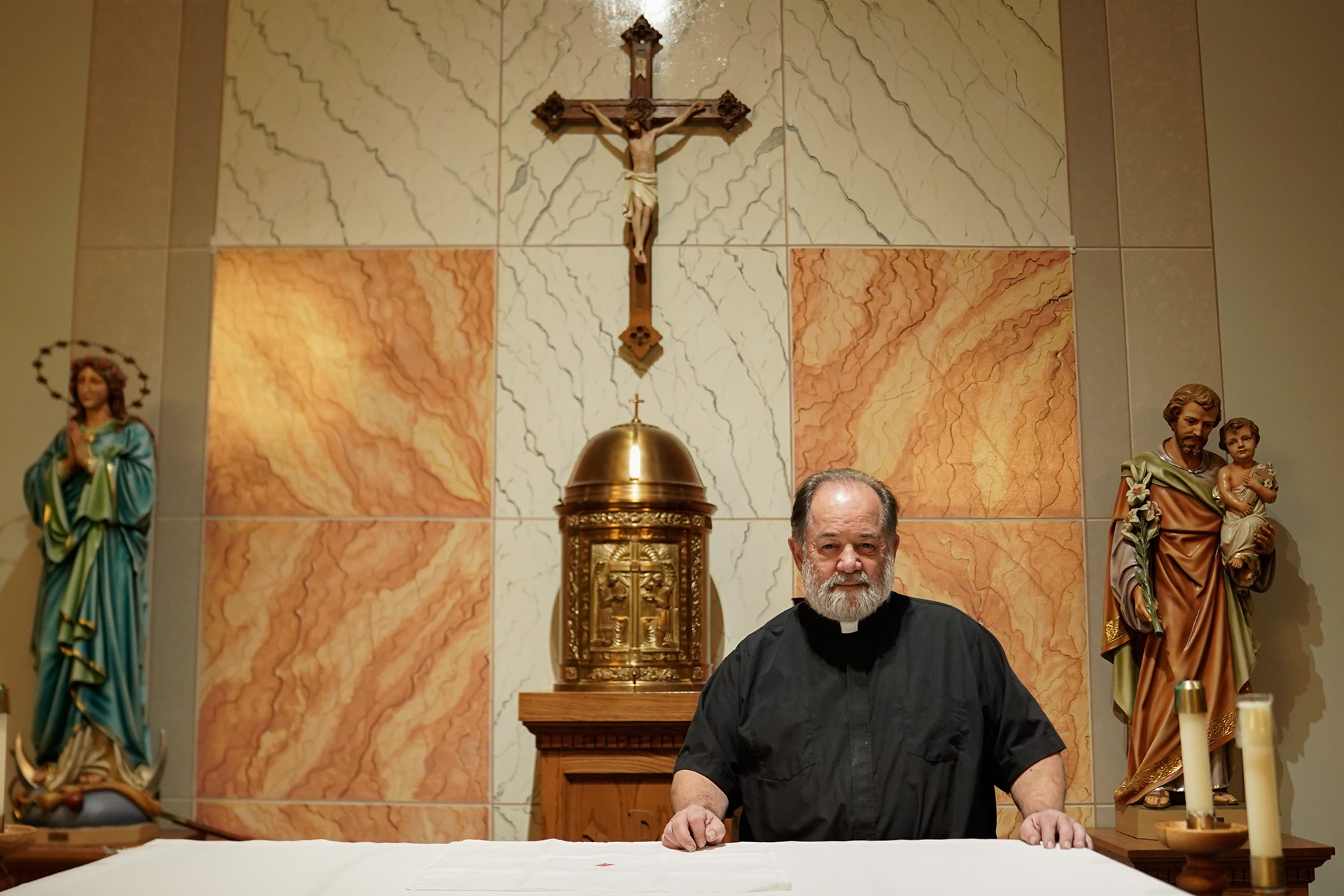
Father Dave Means poses for a portrait inside of his parish before Saturday evening mass. Means also runs the neighboring Catholic church in Chamois. Means is from the river bottoms, as his grandparents grew up here and where visiting was a staple of his childhood. Means traveled the world before settling back in his hometown, having served in Alaska and later Siberia. Means keeps a jolly persona even if he’ll be the first one to tell you the town is dying in many ways.
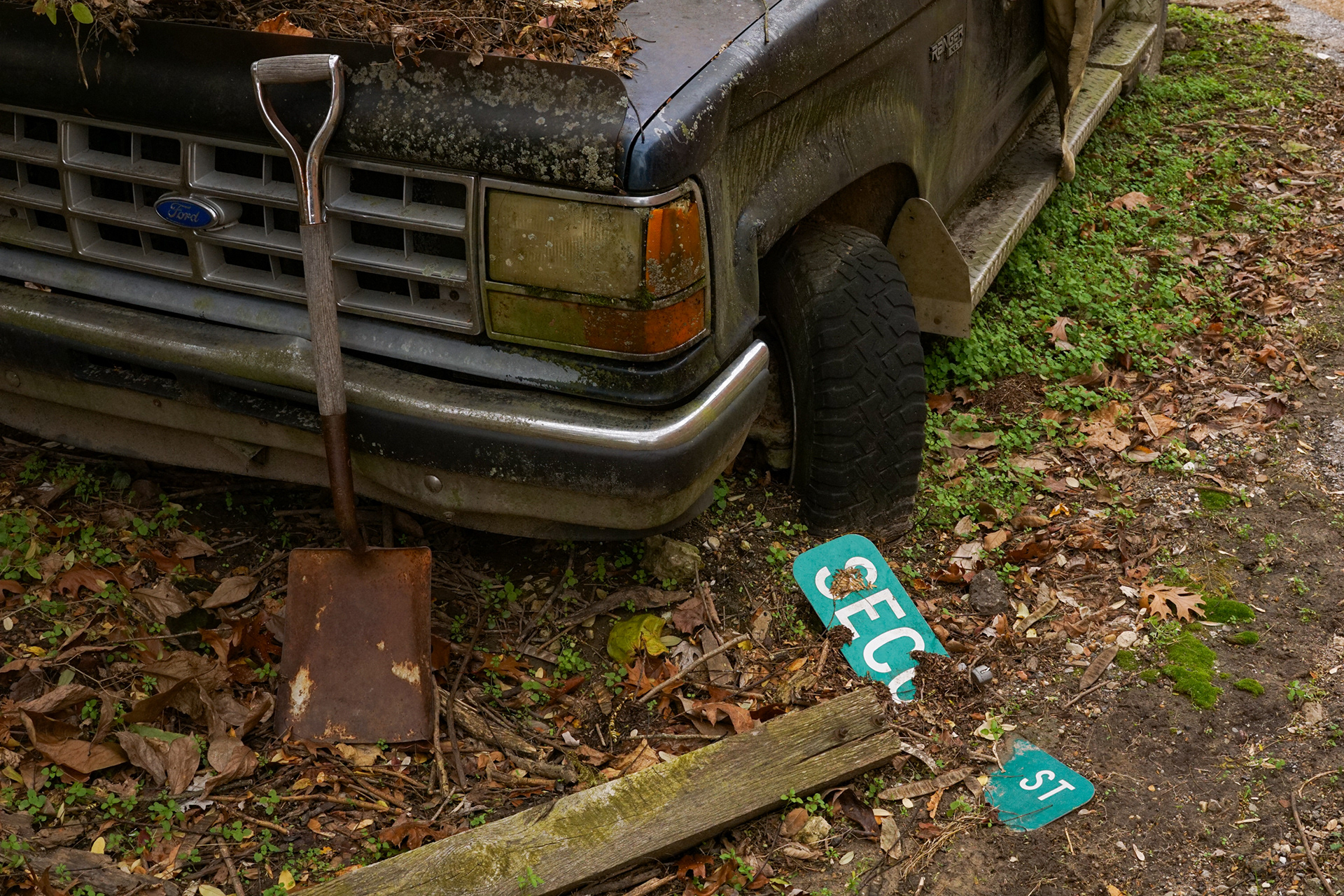
An abandoned truck lies next to a struck down street sign in Morrison. The corner sits across from the unmanned post office station and next to residential houses. Many trucks lie in this same way, but that doesn’t mean that efforts to maintain the town have died. The city council of a handful of locals meet monthly to discuss improvements to the town, dealing with county and state government and giving their two cents about what is next for the tiny city.
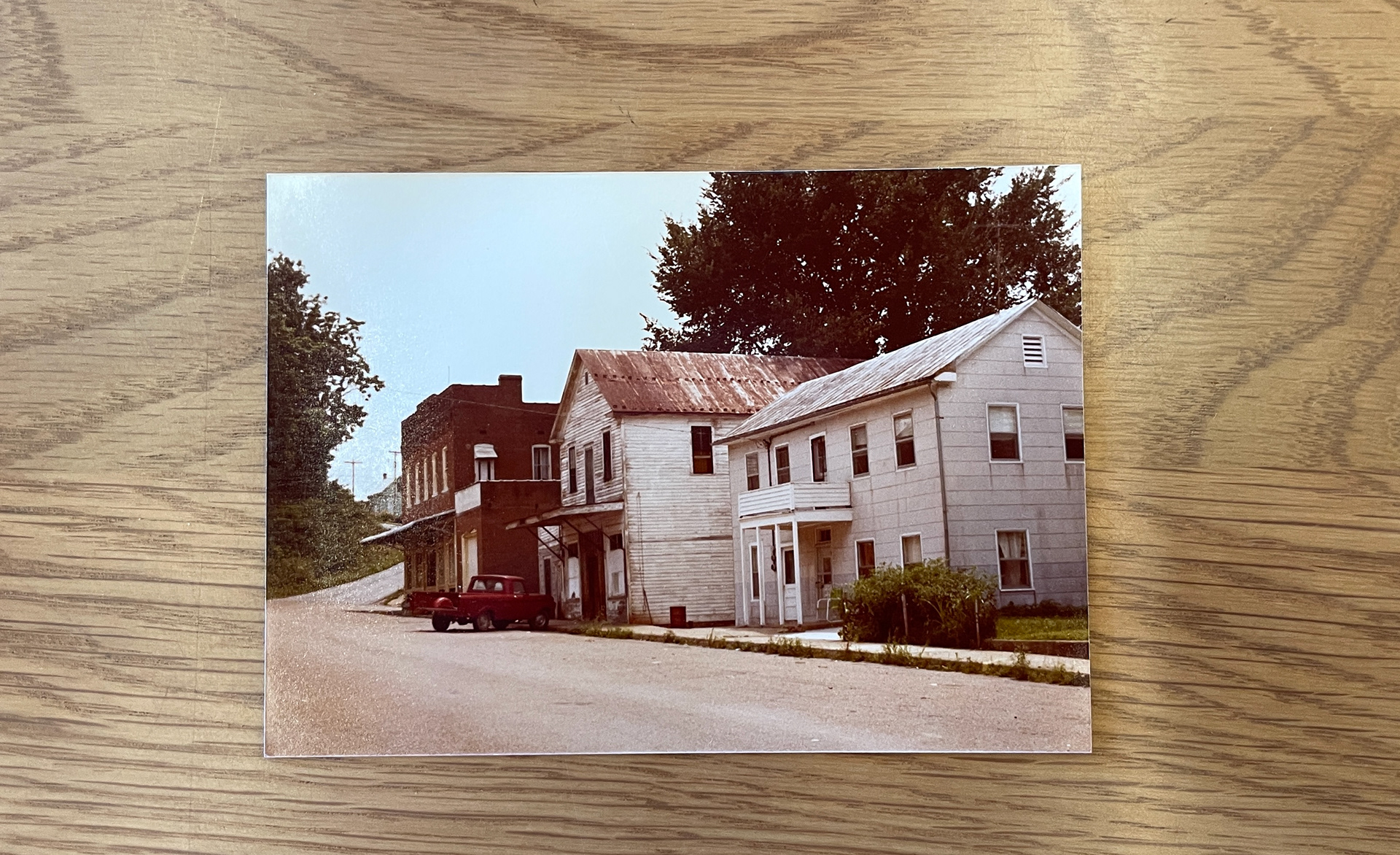
Missouri circa 1980. The town’s buildings have not changed much, minus the ones destroyed by the flood of 1993. “I was born there but never lived there. I owned a business there and was a board member of the co-op before it closed. I have little sentimental value for the town itself as I used to know everyone in town when the population was 150, now the population is less than half of that and I only know a dozen or so. The fabric of the town has changed so much” said Charley Rost.”
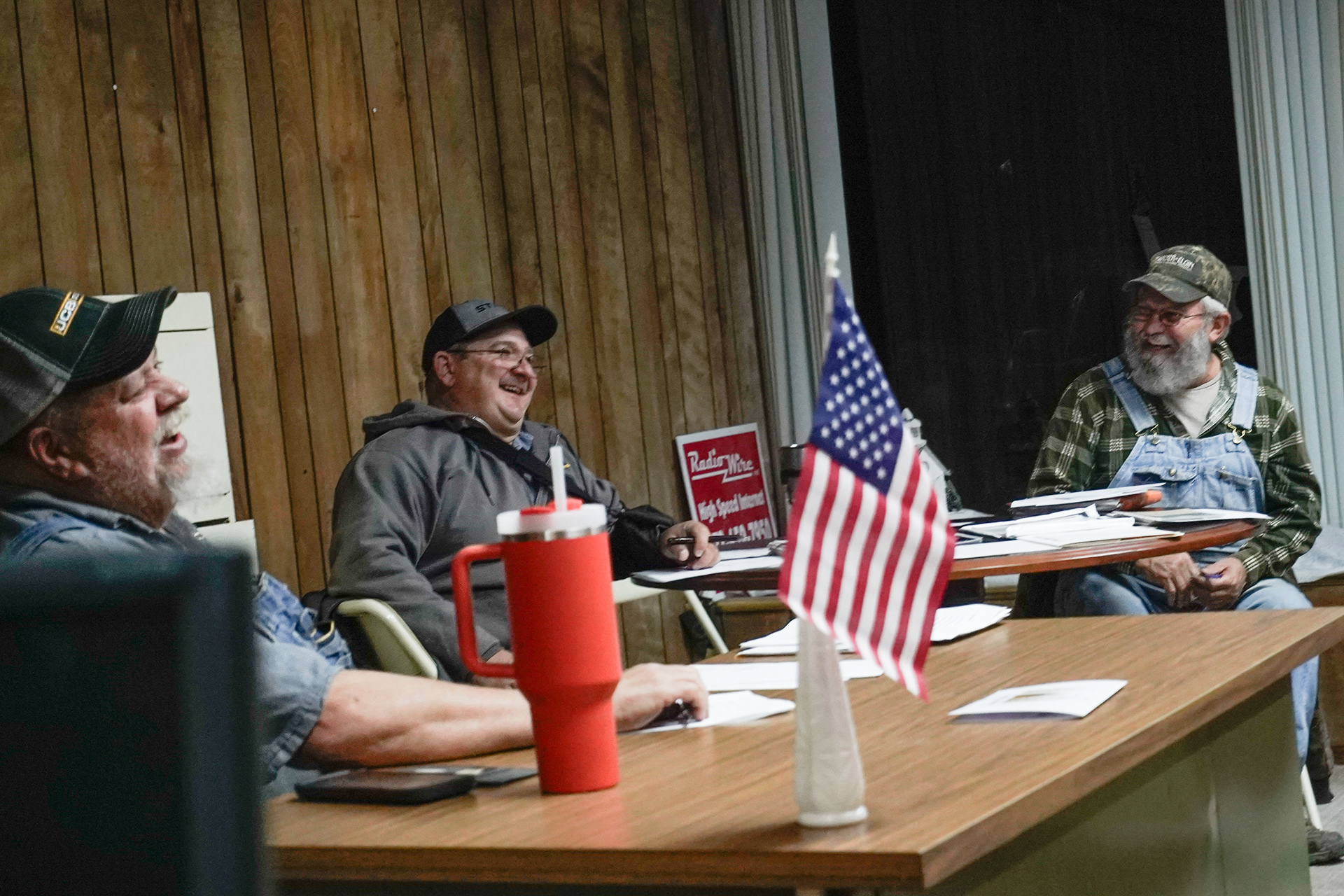
From left, Morrison Mayor Rick Penrod, Alderman Jason Koenigsfield and Alderman Tom Hernandez laugh after a joke about President Trump’s reelection during the monthly city council meeting. Despite a small population, the board functions like any other small town: they discuss finances, unpaid water bills, the upcoming Santa visit, road repairs and more. Among the most spirited of topics was the discussion of a local who suddenly lost his wife before Thanksgiving. They debated what the government can do to show their support, debating a potential precedent of planting a tree around town as part of revitalization efforts. They ultimately decided on a card, as they wanted to make sure they could keep up a fair tradition for all future deaths in the town.
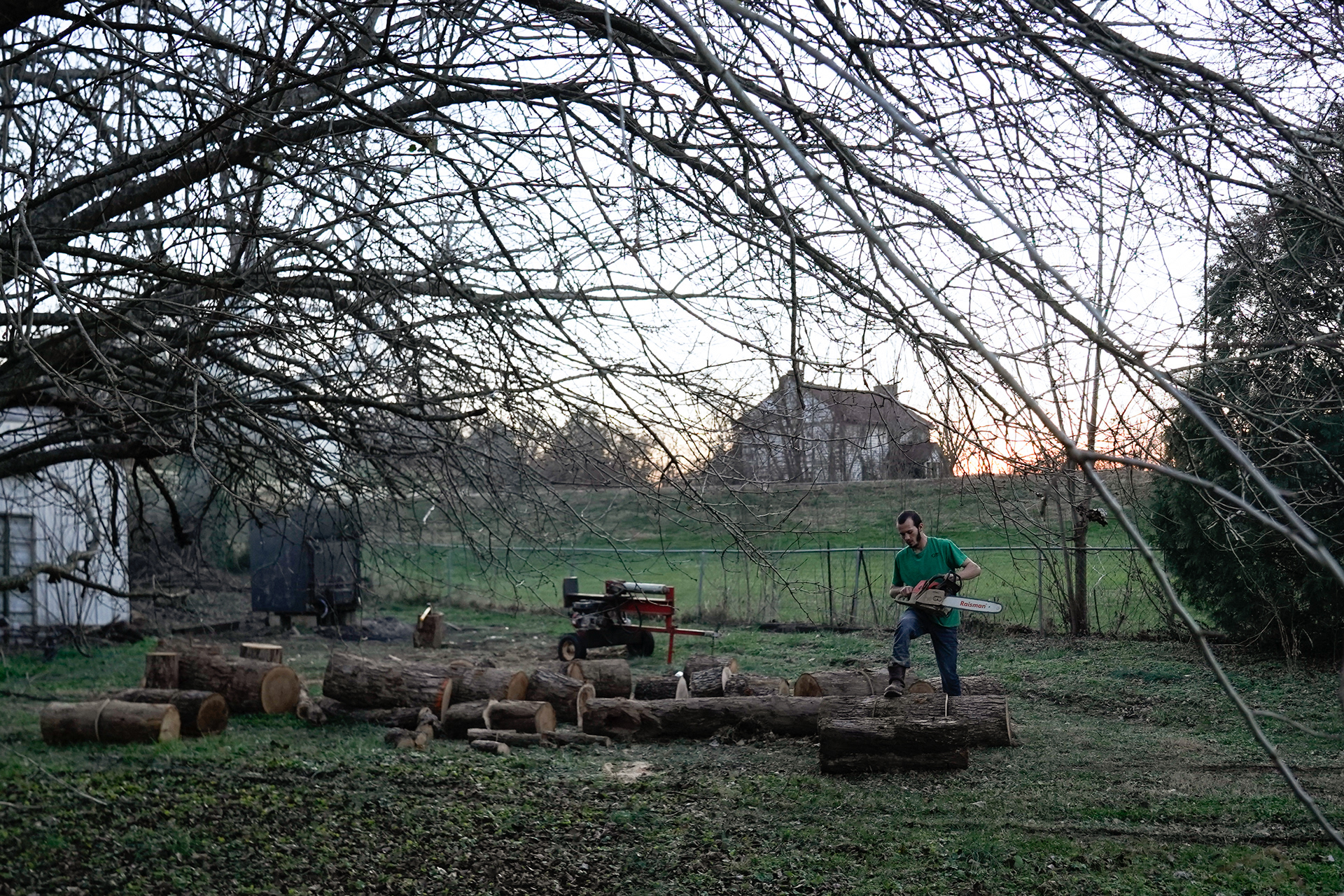
Christian Strope chops wood to feed his wood stove heater in Morrison. Strope bought the 2,400 square foot house for $8,000 after it was unoccupied for about a decade. Strope works in Jefferson City for Hitachi and chose Morrison in part because his Mom lives up the hill in town.
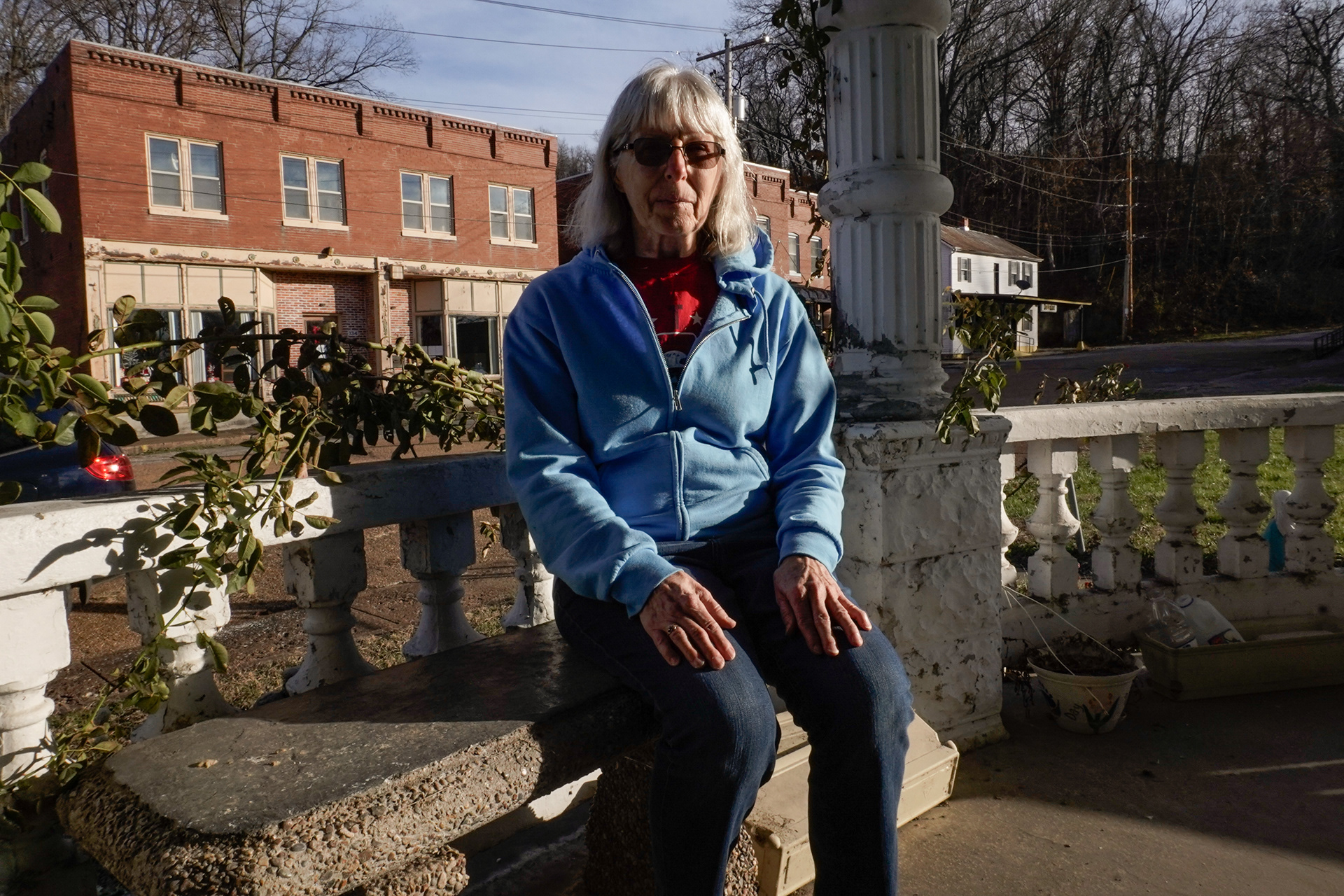
Local Doris Rost poses for a portrait on the balcony of her home on Main Street in Morrison. Rost’s family has been a part of Morrison for generations, with Myron being a name acting as a throughline through her family tree. She has lived in the house since 1974 after growing up on a house on the hill, just southeast of her current home. Rost worked as a schoolteacher in Chamois, later retired and worked at the post office 500 feet from her home and currently serves as the Morrison city clerk. “I like it here. It’s small and quiet, not what it used to be before the flood. When the businesses go, so can the town. I hope to see it revitalized” Rost said.
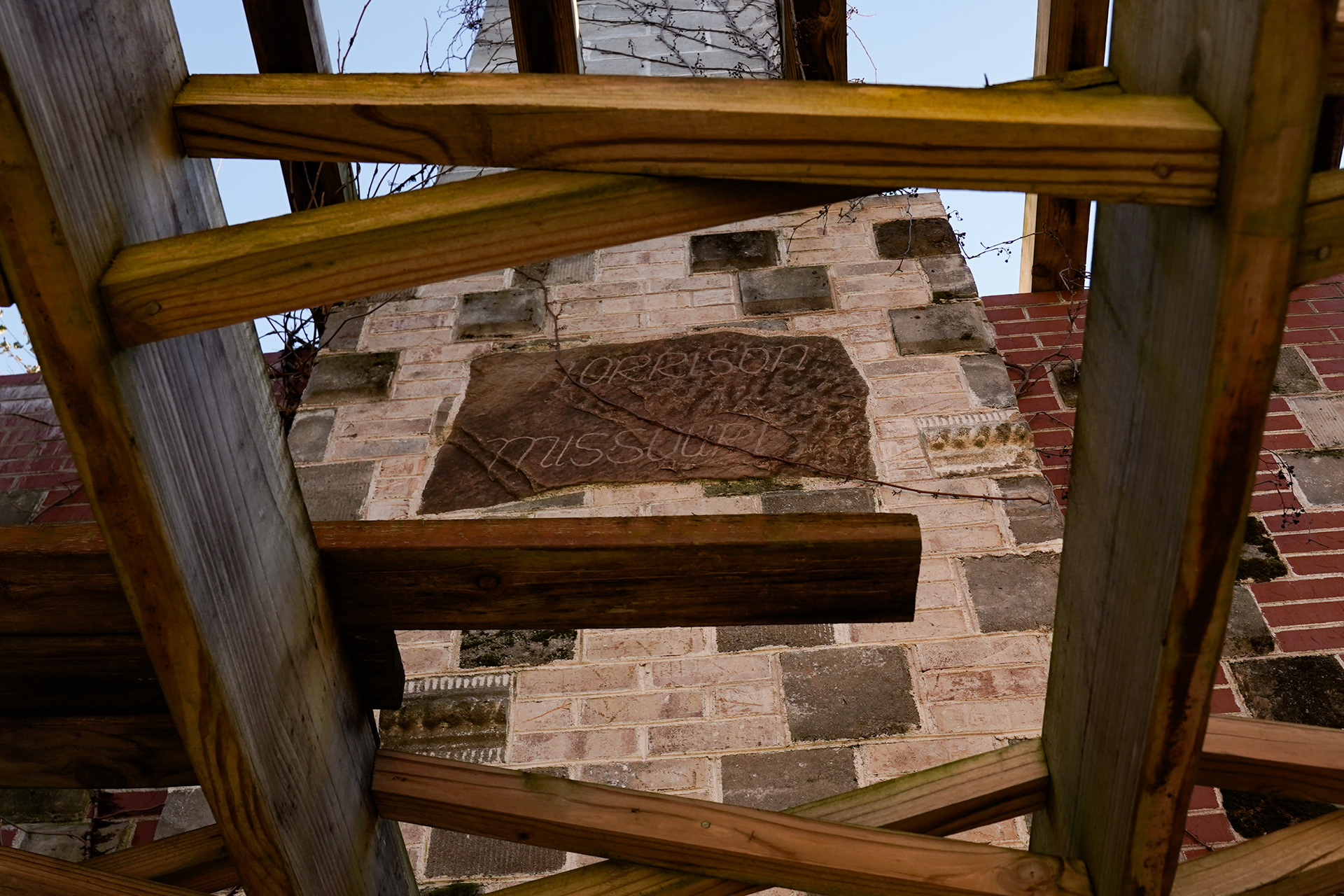
An engraving of “Morrison, Missouri” lays on the remnants of a brick wall on Main Street in Morrison. The property is known to locals as the “Morrison Monument”, having been a bar, a bank, a barber shop, and more. “It had been vacant for a number of years before a stranger to Morrison purchased it with the intentions of building a log cabin over the top of it and possibly turning it into a Bed & Breakfast” said Charley Rost. The engraving was done by Rost and his that his son and he helped the mason put in place back in 2016.
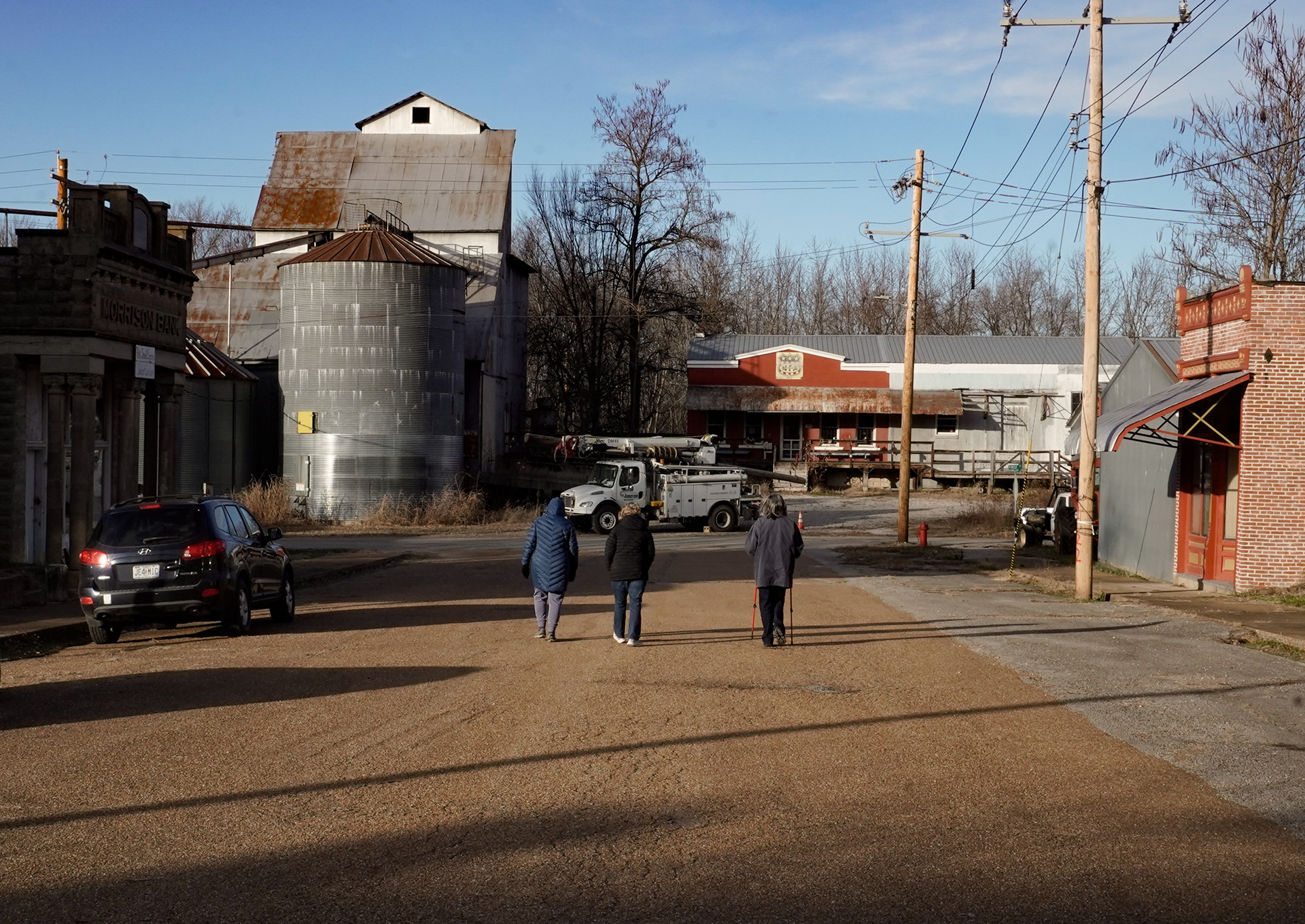
From left, Morrison townies Sharon Baker, Jeanie Birk and Theresa Schowengerdt walk down Main Street in Morrison. Known as the “town walkers” they get together often to walk what is left of the town, gossiping about the lives around them. When asked if the town is dying, they’ll say “on life support” with a jovial laugh. There is no denying that Morrison on the outside looks like its stereotype. But the walkers represents the truth about small towns: The only people who have the right to label a town as “abandoned” or “dying” are the ones who call the place their home.
When I first walked along the few streets of Morrison, Missouri, I thought that the town had been abandoned. Buildings have for sale signs, the one local restaurant has been closed since the Covid-19 pandemic, debris from months old renovations lay on the ground undisturbed. One wouldn’t know who lives here until you catch a modern car driving by, a litter of beagle puppies barking in a backyard, or someone walks to knock on their neighbor’s door.
“Morrison is certainly a small town, dying in many ways” says Father Dave Means, the local priest who runs Assumption Catholic Church. Before 1993, many could argue that it was alive and thriving. According to the Gasconade County Historical Society, “In 1855, the Pacific Railroad began service through Morrison. It has always played an important part in the history of the town. A stockyard was built along the tracks near the depot so farmers could ship their livestock to eastern markets by rail. Railroad workers, passengers and cargo all helped to improve the economy of the town.” 20 years later, the town had a meat market, general stores, a wagon maker, saloons, a hotel, a physician, tailor, shoemaker, blacksmith, photographer and a lumber manufacturer. The population at that time was around 150 people.
The eerie sense of abandonment that engulfs the town today is a reflection of a slow decline since 1993, when water toppled a levee built in the 1950s, destroying the lower part of town. It flooded most of the businesses. Susan Sundermeyer is the author of the book “FARMHOUSES: Before the Great Flood of 1993 - Life in the Chamois and Morrison Missouri River Bottoms”. She says in the text “The sixteen-mile strip of Missouri River bottom land from above Chamois, Missouri, to below Morrison, Missouri, was once populated with many farmhouses that sheltered the families living the American Dream of Farming. The farming community was strong in its faith, work ethic, and family care. Now, only a few are left.”
Today Morrison has two churches, an unmanned post office, a city hall that meets once a month, an independent gas station, a handful of local farms and residential houses. According to local UPS driver Jeff Fitzpatrick, he has delivered packages to every resident in town, saying that “with the internet, people buy things and it doesn’t seem as quiet.” To the locals who still call this place home, dying may be a harsh word, but it is still. For a lifelong townie Doris Rost, it is all she’s ever known since 1974, having grown up here and worked in the neighboring town of Chamois. “I like it here. It’s small and quiet, not what it used to be before the flood. When the businesses go, so can the town. I hope to see it revitalized.”
Is Morrison dead? Absolutely not. Has it been abandoned? No chance. Is Morrison dying? Visually on the surface, it certainly looks like it. Many townies may even agree with you. But the duty of bestowing such a label is not up to the people who do not call the micro-town home. It is up to the residents who still live there to define it. Morrison is as alive as they need it to be.
